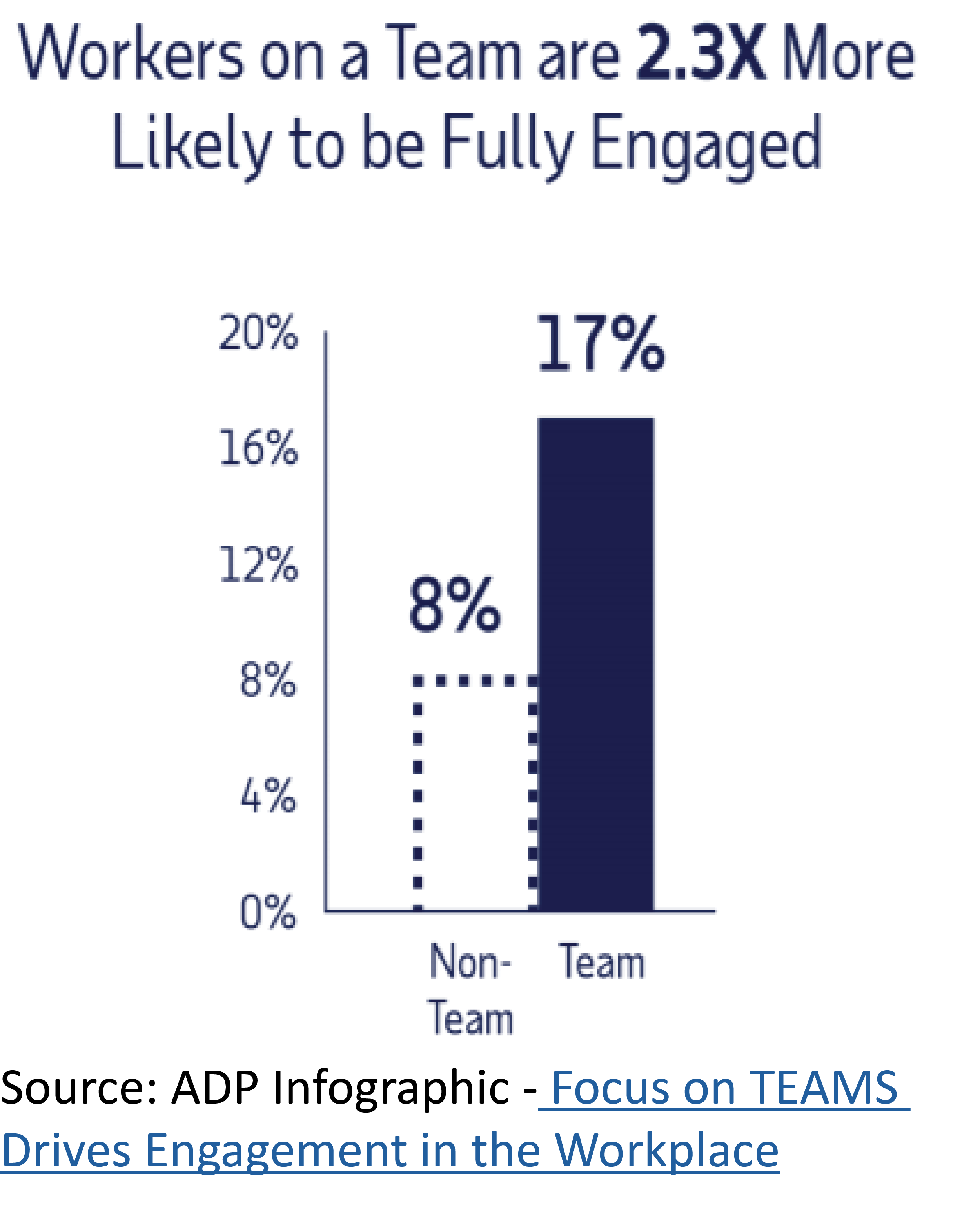Are You Listening?
Part Two: Use a Pulse Survey to Find Out What’s Going on With Your Team
April 17, 2020
Last week we talked about the power and importance of asking good coaching questions to understand how your team is fairing right now. Today, we want to share another approach. Trispective, in partnership with Newmeasures, is offering a team check-in pulse survey and coaching support for you and your team.Â
Here’s How It Works
Step 1: Pulse Check
We’ll send a short survey to your team to identify what’s already working, and where the team needs support and coaching. This anonymous survey will allow your team to tell you what’s really on their minds in regard to hot topics such as:
.png)
Â
- Communication
- Clear expectations
- Support for well-being
- Collaboration and connection
- Meeting structure
- Conflict management
- Team leadershipÂ
Step 2: Leadership Coaching SessionÂ
We will review the pulse survey results with you to ensure you understand your team’s strengths and challenges and what they need from each other and you to move forward collectively. In this 60-minute coaching session, we will discuss your important role in leading the team during this time and make sure you are prepared to help lead the team in a discussion on the results.Â
Step 3: Facilitated Team SessionÂ
Then, we will take your team through a facilitated, 90-minute Zoom session to discuss the findings and create clear next steps and actions. The session will include:
- Reviewing and analyzing your pulse survey results
- Sharing best practices for virtual teamworkÂ
- Developing your team’s operating normsÂ
- Expectations and needs from you (the team leader) and each otherÂ
- Creating actions and next steps
Â
After the individual and team coaching, we will send another pulse survey to the team to ensure we have made progress and identify if there are other topics that may warrant additional discussion or coaching.
Investment
This process includes the following elements:
- Pulse survey
- Leader coaching
- Team session facilitation
- Follow up pulse surveyÂ
For more information contact us or call us at 720-259-4092.Â
Â
Three Ways to Bust Silos in Your Company
by Rebecca Teasdale February 24, 2020
Politics, turf wars, and a lack of alignment. These were cited as the biggest obstacles to innovating in large companies by Innovation Leader in a recent study published in HBR. In my work with executives and their teams, I see this challenge play out daily. What’s interesting to me is why ambitious, driven and brilliant executives choose to stay stuck when their energy could be so much better spent dealing with their urgent competitive challenges. I see executives allowing politics and turf wars to handcuff their most important initiatives –- the initiatives they are literally banking on for both their short- and long-term results.
Read full article here.
Teamwork: The Engagement Multiplier
Engagement studies remain doggedly dismal. Somewhere in the neighborhood of 80% of employees globally are less than fully engaged. We are all looking for the key levers we can use to change this equation for our own organizations. Luckily, a new study has uncovered a link we can all impact: Teamwork. In a recent HBR article, Marcus Buckingham and Ashley Goodall provide insights around ADP Research Institute’s most extensive and methodologically consistent study of engagement yet undertaken. The study involved a representative sample of working adults from 19 countries with 1,000 respondents in each country. They make a compelling case for focusing on work done on teams, concluding that the most powerful factor “was simply whether or not respondents reported doing most of their work on a team. Those who did were more than twice as likely to be fully engaged as those who said they did most of their work alone.â€
At Trispective, we understand and believe in the power of teams. We have researched thousands of teams and uncovered our own startling statistic: Over 80% of teams are not reaching their full potential. They could be stronger, more aligned, and more productive. Additionally, as Buckingham’s engagement study documents, teams need to be more agile, more capable of working remotely and globally, and quicker to ramp-up and flex as projects and situations change, than ever before.
As a leader, it’s important to understand the key elements that create the highest-performing teams. A team development approach that leapfrogs past the old model of “forming, storming, norming performing†is needed in today’s environment. There just isn’t time to wait until scope is clear, relationships have formed over the years, or the business has stabilized. Through putting the right practices in place early, you can create healthy team behaviors, build trust, and set your team up for success much earlier than we thought possible in the past.
Here are the three ways we have found to be the most effective for creating unstoppable teams right from the start:
1. Invest in trust-building, relationship-development activities early and often. Even if your team is temporary or project-based, trust is the key ingredient in effective teamwork. In fact, in our research, we found that over 70% of the variance between top teams and toxic teams is directly correlated to the strength of peer relationships. Although it is tempting to dig right into driving results, especially when you are under pressure, spending the necessary time to help team members understand one another’s backgrounds, strengths, and personality preferences and styles will quickly build trust, good will, and the assumption of positive intent among team members.  This investment will pay dividends in how quickly teammates can gel. It accelerates the inevitable time often wasted on personal conflicts, misunderstandings, and conflicting styles.
2. Build team norms. We all bring unspoken expectations with us to our new teams. These expectations are typically unconscious, driven by what we have experienced on previous teams. And, guess what? These expectations don’t all match! What should we be discussing at team meetings? Do we value candor and feedback with each other? How will we drive accountability? What if someone on the team lets me down? Will you, as the team leader, solve our team conflicts? By having these types of conversations up front, and clarifying team norms of behavior, you can set a level playing field for all team members and set up productive team practices right from the start. In fact, in our research, we found that the highest performing teams (those in the top 15 – 20% of our study) are 70 times more likely to have clearly stated norms than their dysfunctional counterparts.Â
3. Define shared goals for the team. When team members don’t know each other well, and don’t know if they can truly rely on each other, it is easy to dig in individually and focus on personal agendas. Without a well-articulated mission for the team, with clearly identified goals and metrics, your team members might be working really hard, unfortunately, just on the wrong stuff. Spending time early on in a team’s journey to map out the shared team goals, discuss possible challenges or misalignments, and map out a plan for collaborative, connected work is critical.  Top teams are 55 times more likely to create shared goals and ensure the alignment of priorities to these team outcomes.
Think of it as truly getting double the amount of bang for your buck. Build your team and immediately impact the engagement of every one of your team members! Seems like a good investment to me.
The Benefits of Taking a Leadership Break
Breaking the habit of being too busy
By Audrey Epstein
My adult son came home from college for Spring Break last week. He did nothing. I mean nothing. He stayed out until 2am with his friends, slept until the middle of the afternoon, binge watched TV, and enjoyed letting us cook his meals and take him shopping and out for dinner. I must admit I was somewhat appalled by his laziness and lack of industriousness. How could he do nothing? By day four I could no longer hold my tongue. My “shouldn’t yous†and “why don’t yous†in that special mom tone definitely came out.
He was both surprised and indignant. “Mom, I just had 3 midterms, wrote 20 pages of research papers, all while holding down my 25-hour a week job. I want to do nothing. Why are you hassling me?†I felt taken aback, but I started to think….is there something wrong with doing nothing?
In my executive coaching work doing nothing is not a theme I have to tackle with the leaders I support. Instead, these leaders are often too intense, too aggressive, too impatient, and too type A. They don’t know how to turn it off or unwind. They are sending their teams emails at 6am on Sunday or 11pm on Thursday. And even though they report to me that they tell their teams, “I just like to work this way. I don’t expect you to respond to me outside of working hours,†their actions speak much louder than their words and the tone is set. Work is first. Work is everything. Work is 24/7.
Three things happen when leaders take a break:
-Â They gain perspective. Distance from a business challenge can often help us resize its impact or rethink its importance.
- They reset and recharge. Contrary to the beliefs of some executives I’ve met, everyone needs sleep. Everyone needs time to reconnect with friends and family. And a little coddling once in a while can be a really nice thing.
- They stop focusing for just a little while on achieving and instead can just be. Many leaders struggle with being present. They don’t stop to enjoy their success. They are always on to the next hurdle. When we are constantly focused on what’s next, we often forget to feel gratitude for what we have today. We feel like we are never quite good enough.
And, when leaders take a little time off to do nothing it is not only great for them, but for their teams as well. (And I don’t mean being “on vacation†while checking your email 20 times a day and calling in for meetings.):
-Â It forces delegation.
-Â It lets more junior team members step up and take on something for the first time.
-Â It demonstrates trust in the team.
-Â It allows team members to plan and achieve their work without guidance.
-Â It forces team members to work together collaboratively and hold each other accountable.
Leaders need to invest the time in breaking the habit of being too busy. Not only will they reap the benefits of taking a break, their team will as well.



